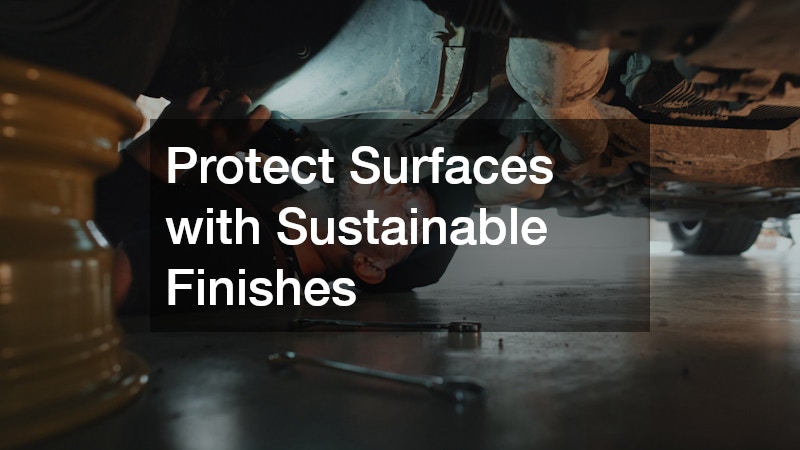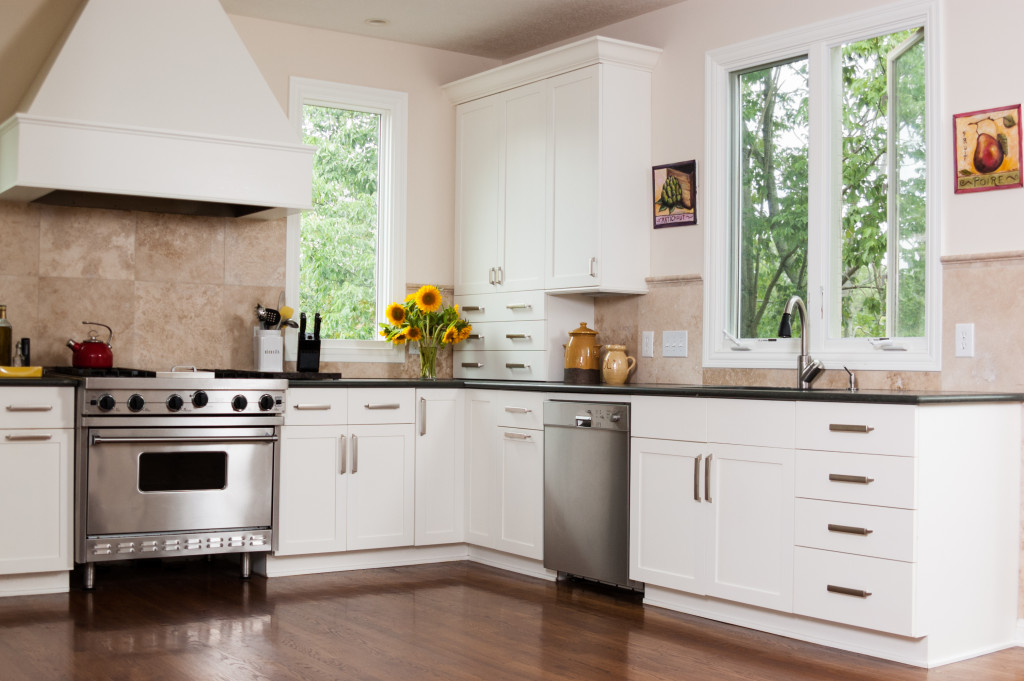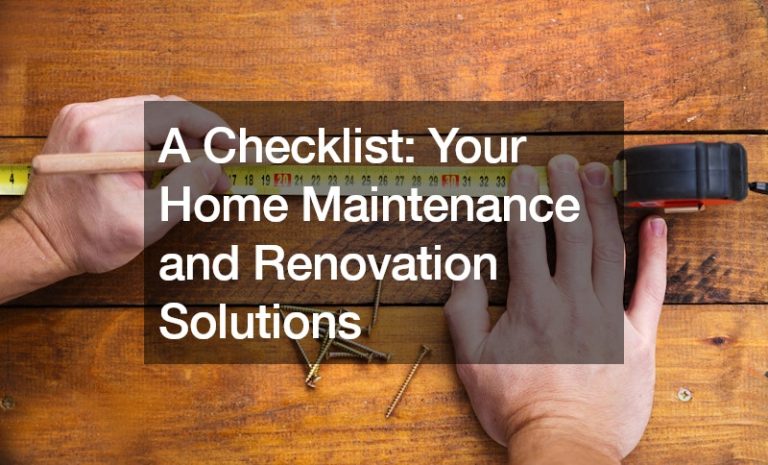Creating a cleaner, greener household doesn’t have to be overwhelming or expensive. It’s about embracing simple changes that improve your home’s environment, conserve resources, and promote well-being for everyone inside it. A holistic household is one that functions with harmony between health, sustainability, and comfort—where every decision, from cleaning products to materials and maintenance, contributes to a more balanced lifestyle. While modern homes are often filled with synthetic materials and energy-hungry appliances, making conscious adjustments can create a healthier and more sustainable living space. By focusing on energy efficiency, eco-friendly materials, mindful cleaning, and responsible consumption, homeowners can significantly reduce their environmental impact. These small steps add up, creating a ripple effect that benefits both your household and the planet. In this guide, we’ll explore twelve simple ways to make your holistic household cleaner and greener. You’ll find inspiration for every area of your home—from floors to ceilings, from your garage to your kitchen—and discover how thoughtful choices can lead to a healthier, more sustainable home environment that’s as practical as it is peaceful.
1. Embrace Natural Materials for Lasting Beauty

Choosing natural materials is one of the most effective ways to make your home cleaner and greener. Beyond their aesthetic appeal, materials like stone, bamboo, and sustainably sourced wood promote better indoor air quality and reduce reliance on synthetic products. For instance, investing in quality wood flooring not only enhances the warmth and character of your home but also ensures durability with a smaller environmental footprint. Unlike synthetic options, natural wood can be refinished instead of replaced, minimizing waste over time. Additionally, responsibly sourced wood supports sustainable forestry and eco-friendly practices. To maintain its natural beauty, regular sweeping and non-toxic cleaning products are all you need. The simplicity of caring for natural materials reflects the essence of holistic living—less dependency on harsh chemicals and more appreciation for what nature provides. When every choice in your home design is made with sustainability in mind, it’s easier to align comfort with conscience.
2. Rethink Storage for a Greener Garage
Your garage is often the most overlooked space in your home when it comes to sustainability. However, it can be transformed into an organized, eco-friendly extension of your household. Installing efficient, customizable storage options helps reduce clutter, extend the life of tools, and keep hazardous materials stored safely. Working with professional garage cabinet installers can ensure your storage solutions are made from eco-conscious materials that resist moisture and last for years. Keeping your garage neat means fewer lost items and fewer unnecessary replacements, which translates to less waste. Plus, a well-organized space encourages better recycling habits—allowing you to separate plastics, glass, and paper for easy disposal. When you can find everything you need, you’re more likely to make sustainable maintenance choices, like repairing rather than replacing. With just a few intentional upgrades, your garage can become an efficient, environmentally responsible part of your home ecosystem.
3. Choose Smarter Flooring Alternatives
Flooring plays a huge role in defining the comfort and sustainability of your home. Fortunately, homeowners today have access to environmentally friendly options that balance performance and style. If you’ve been searching for modern, low-maintenance materials, consider exploring luxury vinyl planks near me that are designed for longevity and easy upkeep. Many of these planks are now produced with recycled content and low-VOC adhesives, which help maintain indoor air quality. Their durability also reduces the need for frequent replacements, making them a budget-friendly and eco-conscious choice. Additionally, they can replicate the appearance of natural materials like wood or stone, offering elegance without excessive resource use. Installing efficient, durable flooring is a smart way to reduce waste while improving the comfort and cleanliness of your living space. A mindful approach to materials can create the kind of foundation your holistic home deserves—sustainable, functional, and visually timeless.
4. Protect Surfaces with Sustainable Finishes

Durable, low-maintenance flooring options don’t end with traditional materials. For high-traffic areas, especially garages or basements, consider a sustainable finishing option like epoxy flooring. While it may seem industrial, modern eco-friendly formulations are low in volatile organic compounds (VOCs), making them safer for indoor environments. Epoxy coatings seal concrete floors, preventing dust, moisture, and contaminants from spreading through your home. They also extend the life of your existing flooring, reducing the need for costly and wasteful replacements. A smooth, nonporous surface makes cleaning simple—usually just warm water and a mild detergent are enough. Choosing sustainable finishes is an essential part of maintaining a holistic home because it emphasizes preservation over replacement. When materials are built to last, they contribute less to landfill waste, promote cleaner air, and help your home remain a healthy, comfortable place for years to come.
5. Manage Waste Responsibly
One of the easiest ways to make your household greener is by rethinking how you handle waste. Sorting recyclables, composting, and reusing items are all great steps, but proper disposal of larger projects requires an eco-conscious approach as well. When tackling home renovations or major decluttering, look into local dumpster rentals that prioritize environmentally responsible disposal practices. Many providers now separate materials for recycling, ensuring metals, wood, and plastics are reused instead of wasted. Responsible waste management prevents toxins and debris from entering landfills unnecessarily. Moreover, using designated containers for recyclables and compostable materials encourages your family to be more mindful about consumption. By taking ownership of how your household disposes of materials, you actively contribute to reducing your carbon footprint. A cleaner, more sustainable home begins with conscious waste management—where everything that leaves your property does so in the most responsible way possible.
6. Simplify Cleaning with Green Products
Switching to natural cleaning products is one of the most accessible ways to make your home cleaner and healthier. Many store-bought cleaners contain harsh chemicals that can irritate skin, trigger allergies, and release toxins into your indoor air. Instead, choose biodegradable, plant-based alternatives made from vinegar, lemon, baking soda, or essential oils. These ingredients clean effectively while being gentle on both surfaces and the environment. You can even make your own all-purpose cleaner at home by combining simple pantry staples with water. Beyond cleaning products, incorporating natural fibers for towels and cloths can further reduce microplastic pollution. Over time, the shift to green cleaning not only makes your household safer but also more cost-effective. It aligns with the holistic philosophy of living gently—reducing your environmental impact while enhancing your well-being.
7. Upgrade Countertops with Conscious Materials

When updating your kitchen or bathroom, consider sustainable materials that balance form and function. Professional countertop installation services can now offer options made from recycled glass, bamboo, reclaimed wood, or engineered stone that minimizes resource use. These materials are not only visually stunning but also incredibly durable and easy to maintain. Choosing an eco-friendly surface means less frequent replacements and a cleaner indoor environment free of harmful adhesives or finishes. Sustainable countertops are resistant to bacteria and stains, reducing the need for harsh cleaning products. The kitchen, in particular, is a hub of daily activity where sustainable design can make a meaningful difference. By incorporating materials that last longer and come from renewable sources, your home naturally becomes a reflection of mindful living—practical, beautiful, and environmentally aware.
8. Create Functionality Through Custom Design
Customization is a key principle of holistic design because it allows you to optimize your space for your lifestyle while minimizing waste. Investing in custom cabinets ensures that every inch of your storage area serves a purpose. Instead of mass-produced options that may not fit your space efficiently, custom solutions reduce unnecessary materials and promote long-term use. High-quality craftsmanship also extends the life of your cabinetry, reducing the environmental impact of frequent replacements. In addition, many designers now offer sustainable wood options, low-VOC finishes, and eco-friendly hardware choices. A tailored storage system promotes organization, making it easier to live minimally and maintain a clutter-free environment. When your home’s design reflects intention and efficiency, you naturally consume less and waste less—hallmarks of a holistic, sustainable household.
9. Strengthen Your Home’s Efficiency from the Top Down
Roofing plays a major role in both sustainability and home protection. Choosing energy-efficient, durable materials can significantly reduce your home’s environmental impact over time. Working with experienced tile roofing contractors allows you to explore materials that provide superior insulation and reflect heat, reducing the need for excessive air conditioning in the summer. Tile roofs are also long-lasting, meaning they require fewer replacements compared to conventional shingles. Beyond performance, tile is often made from recyclable materials, making it an excellent eco-conscious option. Proper installation ensures maximum energy efficiency, preventing leaks and maintaining consistent indoor temperatures. A strong, sustainable roof contributes to both environmental conservation and long-term financial savings, proving that being green doesn’t have to mean compromising on quality or comfort.
10. Bring Natural Balance to Indoor Air

Indoor air quality has a tremendous effect on the overall health of your household. Simple additions like houseplants, natural ventilation, and air purifiers can make a huge difference. Plants not only improve aesthetics but also absorb toxins, balance humidity, and create a calming environment. Opening windows regularly helps flush out pollutants and refresh stagnant air, while maintaining clean filters in your HVAC system ensures pollutants don’t circulate. You can also reduce airborne irritants by limiting synthetic fragrances and choosing organic fabrics. Maintaining good air quality is an essential part of holistic living, as it directly impacts your energy, mood, and well-being. Clean air supports mental clarity and overall vitality—two pillars of a truly balanced home environment.
11. Restore Functionality with Eco-Efficient Repairs
Maintaining your home’s energy systems is crucial for both sustainability and comfort. Scheduling regular inspections and timely HVAC repair can help ensure that your system runs efficiently, reducing energy waste and improving indoor air quality. Older or neglected systems often consume more electricity and distribute uneven heating or cooling, which impacts both your comfort and your utility bills. A well-maintained HVAC system uses less energy, operates quietly, and keeps your living spaces consistently comfortable. In addition, servicing your system helps prevent leaks or mechanical failures that could release pollutants or moisture into your home. A holistic approach means prioritizing maintenance before breakdowns occur—saving resources, money, and energy. When your heating and cooling systems work in harmony with your sustainable home design, your entire living space becomes cleaner, greener, and more balanced.
12. Reinvent Your Garage for Efficiency and Sustainability
Your garage often doubles as both a workspace and storage area, but it can also be a major source of energy loss and clutter. Replacing outdated systems and materials can greatly enhance its environmental performance. For instance, a modern garage door replacement can improve insulation, reduce noise, and limit drafts that affect your home’s overall energy efficiency. Newer models are often made with recyclable materials and feature energy-saving technologies that reduce strain on your HVAC system. Pairing an insulated door with proper weatherstripping ensures that your garage stays temperate year-round, making it more comfortable to use as a workspace or storage area. Additionally, sealing cracks and upgrading lighting to energy-efficient LEDs contributes to reduced energy consumption. With thoughtful upgrades, your garage becomes a functional and eco-friendly part of your holistic household—proving that every corner of your home can contribute to a greener lifestyle.
Building a cleaner, greener, and more holistic household is about progress, not perfection. Each small decision—whether it’s upgrading to natural materials, rethinking waste management, or improving air quality—adds up to a profound impact on your home and the planet. Sustainability is not a one-time project but a mindset that shapes how we design, clean, and maintain our living spaces. By choosing eco-friendly materials, embracing customization, and maintaining your systems with care, you create an environment that supports both health and harmony. Every effort, from installing energy-efficient upgrades to using natural cleaners, reflects a commitment to a better future. The beauty of a holistic home lies in its balance—between comfort and conservation, beauty and responsibility. As you continue making thoughtful improvements, you’ll discover that living sustainably doesn’t just benefit the environment—it enhances your quality of life, nurturing a home that feels more peaceful, purposeful, and alive.






